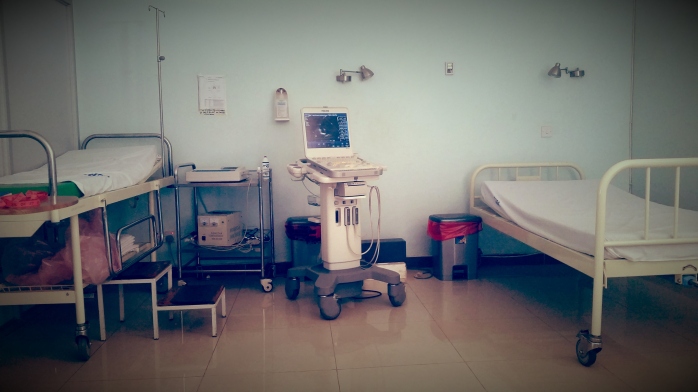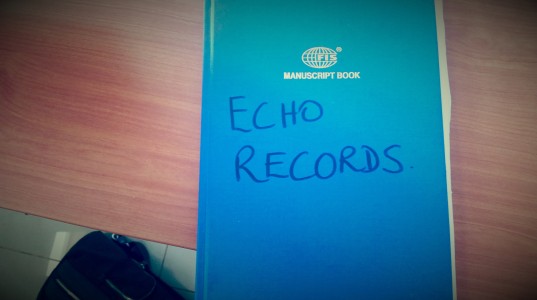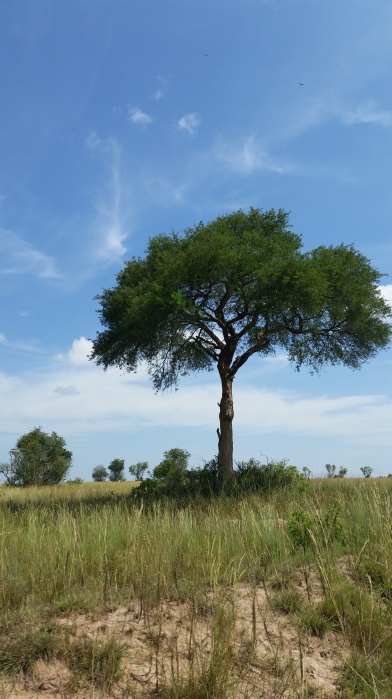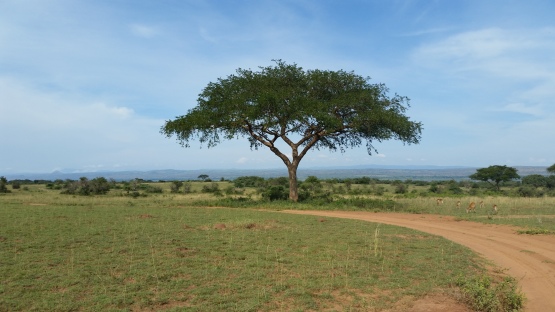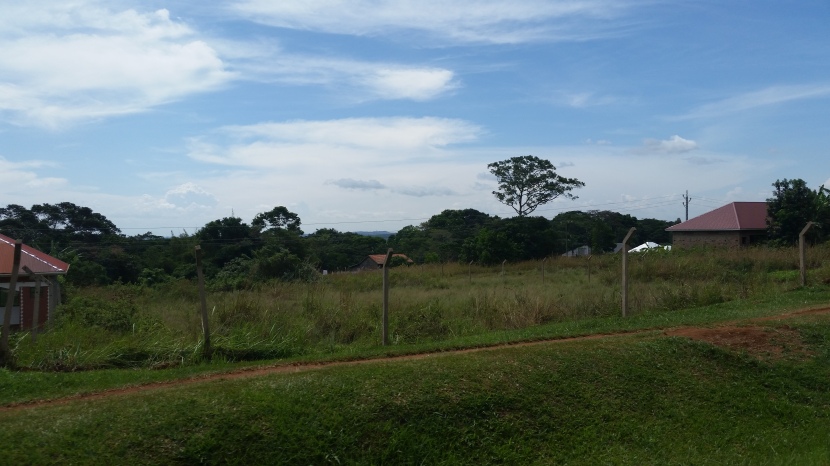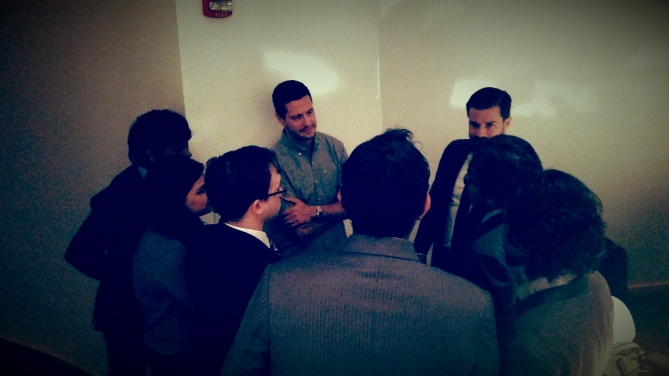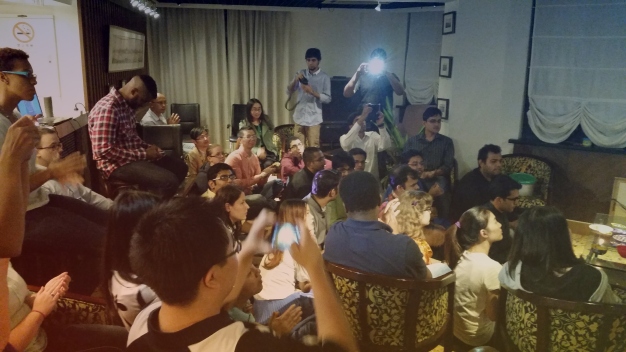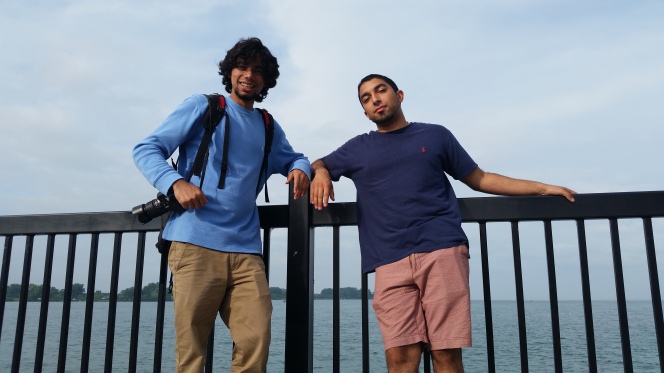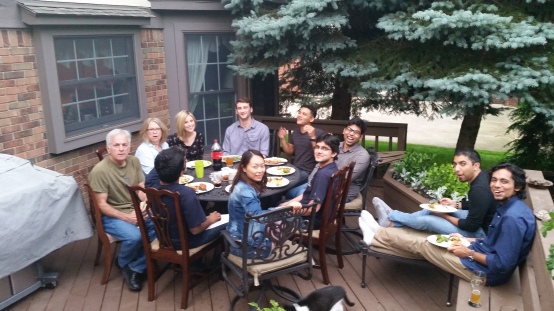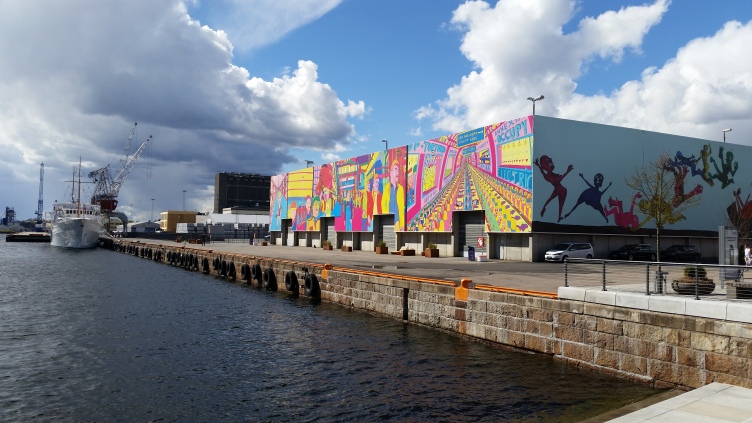An excerpt from a term paper I wrote for a Strategic Thinking course in Global MBA – The idea of constant reflection and a never-ending journey of “learning to be globally inclusive.”
**Note: Sergio Garcia is currently the Chief of Staff in Office of the President at NeoMed (Northeast Ohio Medical Institute)
and simultaneous the Vice President, Office of Diversity, Equity and Inclusion – which he developed. Read more about Mr. Garcia here
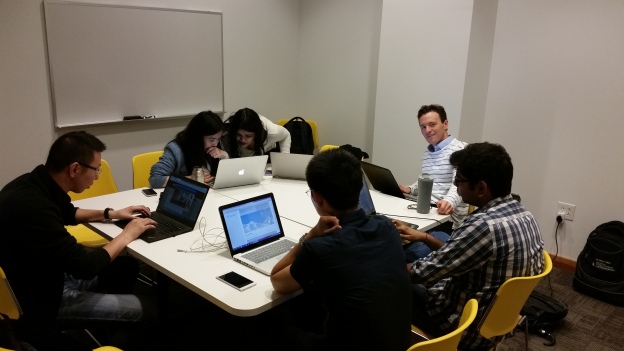
Over the course of Strategic Thinking III, my most profound learning experience came from Sergio Garcia. Mr. Garcia alluded to the fact that even after all of his years of service in Afghanistan in the military and after having grown up in East Los Angeles in a multi-national, immigrant family, he too still had room for growth and learning with regard to inclusion and diversity. This impacted me profoundly because I often think I understand diversity and inclusion. However, after hearing Mr. Garcia talk about the necessity to always be learning about how to be more inclusive in the workplace, and in our personal lives, I realized that by no means is my journey to being an inclusive leader complete. Nor will it ever be.
I was born in Cincinnati, but grew up in Michigan. I attended church and high school in Detroit, a city that was at the time eighty-five percent African American. My friends were African, African American, Latino, Arabic, Sikh and white. My extended family is diverse with regard to class, race, nationality and geographic location. As a result of painful events of my childhood caused by racism, I developed my first career as a community organizer in Detroit working to bring together multitudes of people to create diverse populations to lobby for issues like immigration reform, better housing practices for low-income families by the federal government and the development of a public transportation system. I thought that I was one who truly understood the ideas of diversity and inclusion. However, when Sergio Garcia stepped forward and talked about how even he had a journey left working for Neomed in Ohio, I was humbled in my own rite.
This experience made me develop several feelings. First, I felt naturally humbled. Sergio has a certain commandeering presence in the classroom when he spoke, and I was charismatically drawn to it. I felt that he was honest, straight to the point and able to make an impact in the organizations in which he works as a result. I felt so much respect for a grown man who clearly understood the concepts of diversity and inclusion that could admit he too may have room to grow. Secondly, I felt ashamed. I had spent much of my life trying to convince others to be more inclusive. In fact, I had even led and been an organizer on a campaign to sue several cities in the metro-Detroit region for not being inclusive in their hiring practices! I had been asked to give guest lectures at the University of Michigan and Michigan State University on inclusion, organizing and the role of organizers in creating what the Bible refers to as “God’s beloved community on Earth.” It had caused me over the years to even condescendingly discuss the issue with others who did not understand these themes as clearly as I did. As a result, I thought about all of those instances over the last decade of my life in that one moment in class, and I felt a sense of profound shame. It was a great learning experience, and it is one I will never forget.

I think that others in the room felt somewhat similar feelings as I did, but perhaps not as profoundly. Sergio was such a great presenter that he captivated the entire audience that day. He was able to teach us the different levels of inclusion in the workforce, and seamlessly pair it with what we had learned in the class. He was familiar with LEAD, and resonant leadership, and he tied it all together in his presentation. I think that most others were somewhat shocked when he said this, and for them it was a learning experience also. With regard to my identity groups, I feel that it proved that my empathy is strong. I felt an instant emotional connection, and tried immediately to better understand Sergio, in turn, better understanding myself. Inclusion is important to me because I have such a desire to connect with others and try to put myself in their shoes. Sometimes almost painfully I put myself down because I know that I can only connect with people so much before I realize that my experience in the United States has been profoundly different with regard to privileges of my gender-identity, physical-sex, economic status of my family and the color of my skin. Upon reflecting on this instance for the purpose while brainstorming this paper, I also believe my empathy-identity was reaffirmed. I truly care about creating the “Beloved Community” wherever I am living, working and interacting. Interactions with people like Sergio Garcia reaffirm the identity group that keeps me passionate about securing a job after graduation that will keep me involved in making each place I am a more diverse and inclusive one.
This experience was meaningful to me in learning about inclusive leadership because it is symbolic of the exact reason that organizations have diversity statements, but fail to be diverse or inclusive. It proved that we can get caught up in our experiences and accomplishments at one point in our life, and slowly learn to become just a cog in the wheel of an organization and forget about how there are always different layers to these two topics. It also reaffirmed to me that sometimes it takes a long time for people to open up about the things that are bothering them, or keeping them from feeling included. Sergio himself admitted that he did not realize the lack of inclusiveness in his work with the federal government until he was in Afghanistan, and he realized how few people of minority backgrounds had mobility with regard to their careers.

This experience with Sergio also reaffirmed that two things must take place for real inclusion. First, the leadership must actively create an inclusive workplace or environment. Second, people must also feel included in the decision making process. These are two different concepts. The first refers to what I see as the creating aspect of diversity and inclusion: the leadership creates the opportunity for employees to voice their opinions and feelings freely, and to feel comfortable doing so. The second leans on the edge of the employee taking the active role to speak their mind and taking the risk to trust the leadership that they will not be penalized for trying to enlighten the company on how a certain level of inclusiveness may not be being met. Both are required, and both happen in a growing spiral of sorts, where small moves on both ends will create a stronger, more inclusive place of work.
In considering the insights gained regarding inclusion from Sergio Garcia’s presentation, I am reminded of “The Glass Ceiling Case.” It reminds me of how we can forget about diversity and inclusion at the top. With regard to a glass ceiling, especially for women (with regard to the case), we often think that just because we have brought women into the workforce, we satisfy the requirement or social standard to employ both males and females. But the Glass Ceiling Case we discussed in the classroom reinforces the idea that diversity does not imply inclusivity. Sergio Garcia was case and point: we must always be examining our understanding of inclusivity, or else we will get stuck where our greatest employees may feel the effects of a glass ceiling. If upper management is not creating a pipeline for all employees to rise, we are not truly being inclusive.
Secondly, I examined Gale’s 2007 Interview with Bernardo M. Ferdman, Ph.D., San Diego Psychologist, 22(2), 14-15. In this interview, Gale asks Ferdman about what diversity can be taken away for the purpose of consultants or personal psychologists. Ferdman responds that all beings have some form of internal understanding of these concepts; that “it all starts with ourselves” Ferdman iterates that we “must work on [our own] ability to behave inclusively and to work with people who are different from [us].” This is precisely what Sergio was referring to. We must be on our own spiritual journey of constant reflection and examination of how we are creating inclusive environments around us – in our work or personal lives. While I currently have no problem working with people who are different from me (in fact, I encourage it in my life!), I must continue this internal conversation and continue checking myself in my own actions and the organizations I manage and set up in order to keep evolving with the world around me. I am reminded of an example where I asked the XLRI group to speak Hindi in our free time so that I might learn this beautiful language. What I failed to examine was that several of our XLRI Indian students do not speak Hindi – they speak Canada, Bengali, Telugu or Gujarati! They were being marginalized because they were feeling left out of the conversations in Hindi! I am reminded of when Ferdman states, “a culture of inclusion recognizes, respects, values, and utilizes the talents and contributions of all the organization’s people—current and potential—across multiple lines of difference.” The key here is recognition: we must be in a constant state of reflection in order to recognize where it is we might not be being inclusive. In order to be successful, it must be a constant conversation, a constant “struggle” for excellence, as Sergio puts it.
Third, Sergio Garcia made a fantastic comment about how the size of an organization can easily spoil what was once a truly inclusive organization. As Sergio moved up the ranks in the state department, he noticed that it was becoming less and less diverse, and less inclusive. I am reminded of what Wooley and Malone stated in their 2011 article.
“Families, companies, and cities all have collective intelligence. But as face-to-face groups get bigger, they’re less able to take advantage of their members. That suggests size could diminish group intelligence.”
Wooley and Malone suggest that we can lose track of the importance of inclusivity when our organizations begin to grow large, and profit or fame becomes most important. We must always learn the best way to take advantage of the benefits of diversity of gender, sex, race, age, geographic location, language, economic status, etc. If we do this, we can also produce greater results.
Lastly, I would like to call on a reading from outside of the class, one that fits in with our LEAD work and the overall understanding of organizational behavior studies. Richard Boyatzis’, et. al, book Primal Leadership calls on the concept of “Setting Ground Rules” as a true resonant leader’s job. This book states,
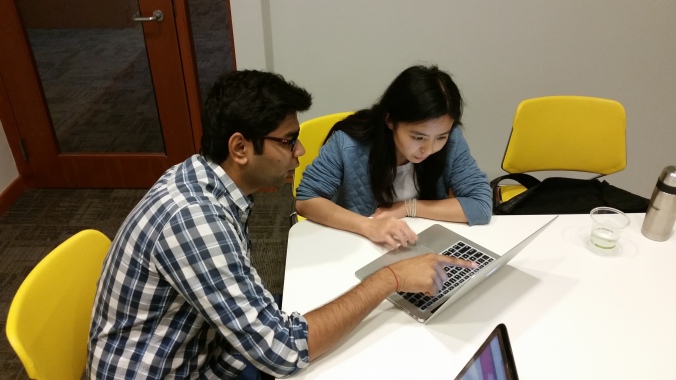
“More than anyone else… the team leader… has the power to establish norms, maximizing harmony and collaboration to ensure that the team benefits from the best talents of each member.”
This concept pairs brilliantly with Sergio Garcia’s comments about the consistent and active search for developing an understanding for inclusion, and then taking it a step further: implementing it as the leader. No matter what position I will be in, whether manager or employee, boss or colleague, I can act as a leader who’s norm is to always be discussing with those in my group how inclusive they feel the organization I am a part of is. Then I can take it a step further by actively implementing the comments I hear, both in verbal communication as well as non-verbal communication, and as I grow in an organization, continue to implement my learning and growth.
There are several ways in which I wish to move forward with the learning from the class as I implement my inclusive leadership strategy in life outside of the classroom. First, I must be in constant reflection of my strengths as an inclusive leader. This will allow me to use my strengths as a toolkit for encouraging inclusion. Second, my ability to actively listen and question others about how they are feeling in a certain situation should work to my benefit. As long as I continue to always question in a child-like wonder and sincere fascination at how people interact, I will be able to build better relationships with those who may not feel included in the workplace. This will allow deeper conversations, and exponentially reinforce the idea of developing a better understanding of what is, and what is not inclusivity.
A third major strength I would like to identify, and continue to grow, is my ability to speak multiple languages. This allows me to communicate with others in the work place in a fundamentally different way than just in a “shared” language like English. By speaking with others in Spanish, Portuguese, German, Mandarin or other languages I will learn throughout my life, I am able to better understand others when they use the truly sentimental nature that they do in their mother tongue. This is a skill that others in management may lack, and I know that I can act to convey topics or information that simply cannot be translated word-for-word into English.

Another important aspect of putting my inclusive leadership ideals into practice is that of working with a mentor to learn to encourage others to learn to communicate problems with inclusivity they may be experiencing in the workplace. I think I can best work with my mentor by learning to understand the feelings and emotions that I have when I experience interactions with others in my work-groups. By learning to examine and understand the emotional reactions I am having with those who may be struggling to participate, or those who are simply not participating in groups in the workplace (and in personal life), I hope to better learn to converse with those individuals. I also think that this places into the path of influencing others to lead inclusively. By understanding my emotions, I hope to learn to understand the emotions of others. When they interact with me, I want to be able to engage them around their emotions to help them pursue the very journey I am: trying to constantly reflect on the idea of inclusivity.
I would like to conclude this paper by discussing one of the topics of moving forward: leaving a legacy. In the beginning of this essay, the brilliant presentation and example of Sergio Garcia really brought home the idea that no matter how successful we are with people who may not look like us, we always have a journey ahead. With the simple truth that the world is always changing, and even more so in our globalizing world – Global MBA is case and point – Sergio presents the perfect example of that constantly reflecting and growing adventure into understanding how to make the space we occupy in life inclusive. The next part of the essay drew on the research presented throughout the class that serves to confirm the importance of being in state of constant reflection. Whether it is the importance of understanding the invisible glass ceiling for those who may not embody the physical or social features of the current executive leadership of an organization, or understanding the concepts in Primal Leadership that seek to explain to use that leaders can actually inspire these inclusive behaviors merely by acting them out in their own leadership positions, we can understand that our behaviors will be our legacy. In closing, I am reminded of a quote from Maya Angelou who proclaimed,
“I’ve learned that people will forget what you said, people will forget what you did, but people will never forget how you made them feel”
We have the opportunity now to leave the legacy of inclusivity by understanding how to be resonant leaders with our employees, friends, family, neighbors and even strangers; because our actions, and our legacy will truly be the way that others learn how to behave. If I can continue to connect emotionally with others based on my leadership strengths of listening and language/communication, I truly believe that I can have an incredible journey coming to understand inclusivity better and better every day of the rest of my life. As I began this paper, shall I end it: in that brilliant moment when Sergio acknowledged his journey, I realized that by no means is my journey to being an inclusive leader complete. Nor will it ever be.
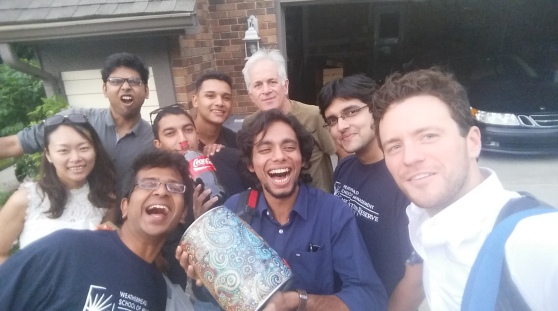
I took a group of Global MBA students to my home in metroDetroit and showed them around the region – as they showed me around theirs over the past year. By spending hours in a car driving around the world with people, those talks of inclusion are bound to come out. Listen carefully to them. This is the Global MBA.





